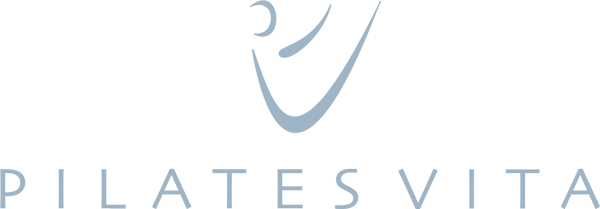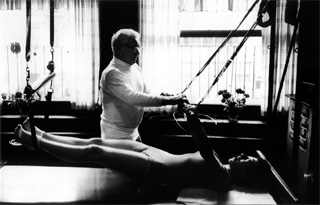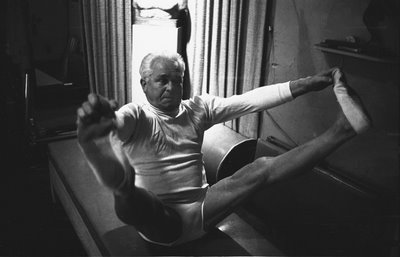What is Pilates?
The Pilates Method of Body Conditioning is a system of exercises focusing on the “Powerhouse,” which includes the abdominal, buttocks, hips, and inner thighs, to strengthen and lengthen the body.
While strengthening the core stability muscles, Pilates works to re-align the spine to its optimum position. It focuses on proper form and alignment while strengthening core stability muscles through movement, connecting your mind to your body for proper execution.
Pilates differs from typical gym workouts, utilising over 500 exercises with specialised equipment created by Joseph Pilates, along with seven key principles: Centering, Control, Concentration, Coordination, Breath, Flow, and Precision.
The Origins of Pilates
Joseph H. Pilates was born in Germany in 1880 and faced chronic illnesses as a child, leading him to study physical fitness and health. He explored human anatomy and animal movement, as well as Eastern exercises like yoga and Tai Chi.
By fourteen, he was modelling for anatomy charts. He was a skier, diver, gymnast, and boxer, who studied yoga and circus training. He worked in England as a circus performer with his brother.
During World War I, while interned with injured soldiers, he developed "Contrology," an exercise system rooted in Western and Eastern medicine, yoga, Greek philosophies, karate, anatomy, mathematics, and engineering. He created equipment to help rehabilitate wounded soldiers.
On his way to the U.S., he met Clara, who became his second wife. In 1926, they introduced his method in New York, opening a studio on Eighth Avenue.
Initially, he worked mostly with men, especially boxers. Their studio was in a building with many dance studios. By the late 1930s, notable dancers like George Balanchine and Martha Graham sent their dancers to him. Joe and Clara also spent summers at Jacob’s Pillow, a renowned dance camp.
Over his lifetime, he developed a scientific body conditioning system that transformed the health and bodies of its practitioners. His mat work emphasized quality and precision rather than quantity of repetitions, integrating correct form and posture into daily activities.
Joseph H. Pilates passed away in 1967 at eighty-seven. Clara continued the studio for ten more years until her passing. His certified pupils, the first generation of Pilates teachers, continued spreading his work. Pilates Vita's owner, Patrícia A. Robinson, trained with two first-generation teachers, Ron Fletcher and Lolita San Miguel.
Benefits of Pilates:
Strengthens and tones all muscles.
Improves posture.
Provides flexibility and balance.
Increases circulation and endurance.
Creates a more streamlined shape.
Unites the body and mind.
Develops muscles uniformly.
Heals damaged tissue.
Allows everyone to exercise, regardless of age or fitness level.




